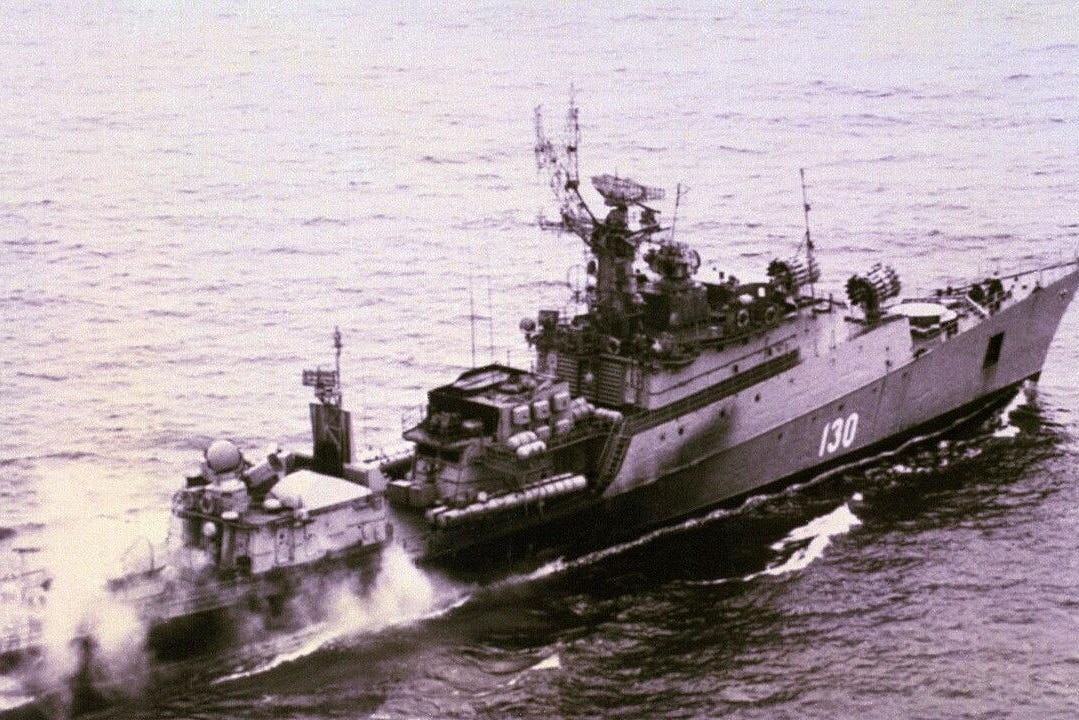With the late-August launch of Marichka—an 18-foot prototype drone submarine—the Ukrainian navy soon could deploy an undersea strike capability. Fitted with explosives and guided by an internal inertial system, the underwater drones could wreak havoc on what remains of the Russian navy’s Black Sea Fleet.
Since the Black Sea Fleet can’t receive reinforcements—Turkey controls the Bosphorus Strait and isn’t allowing warships to pass through—it must make do with the forces it already has as it devises ways of intercepting a possible future fleet of Ukrainian drone subs.
That means the fleet’s sonar-equipped Kamov Ka-27 helicopters, as well as its 181st Antisubmarine Ship Division. The division oversees four Project 22160 and three Grisha-III anti-submarine-warfare corvettes.
The newer, 1,700-ton Project 22160s apparently lack sonars: their job is to screen the older, 1,000-ton Grisha-IIIs, which come equipped with two sonars: one that’s mounted under the bow and another—the classic Elk Tail—that the vessel dips vertically on a long cable.
The Grisha-IIIs are around 40 years old, so it’s worth questioning their condition. But in their day, they were “potent small combatants,” according to famed naval analyst Norman Polmar, writing in Proceedings—the U.S. Navy’s professional journal—in 1976.
If the Black Sea Fleet can deploy its Kamovs and Grisha-IIIs the way the Soviet navy did, maybe it can find and sink Ukraine’s drone subs before they slip into a fleet anchorage.
Soviet shallow-water ASW tactics were fairly sophisticated, as naval consultant Troy Bentz explained in a 2010 issue of Proceedings. “The Soviets relied on active sonar as the preferred method of detection in the littorals,” Bentz wrote. “They learned that dipping sonar—lowering a sonar transducer into the water from an ASW helicopter—on fast platforms was very valuable.”
“Employing two or three platforms in a system was the most tactically effective,” Bentz continued. “The Soviets not only employed dipping sonar on helicopters, but also on the Grisha-class ASW corvettes.” Any mix of two or three Kamovs or Grishas would do.
The corvettes and helicopters worked together using “leap-frog” tactics, Bentz explained. “One ship would drift, actively pinging with dipping sonar, while another raced ahead to a calculated position.” In this way, pairs of helicopters or corvettes could drag a sort of sonar chain across a maritime chokepoint—the mouth of a bay, for instance.
If there’s a flaw in the tactic, it was that the Kamov or Grisha hovered or idled while it dipped its Elk Tail sonar. Each dipping sonar was a stationary obstacle—one a careful submarine commander could navigate around.
The Soviets anticipated this problem. A Grisha’s bow sonar pings continuously while the corvette is cruising. In a sufficiently large Soviet ASW flotilla, some of the corvettes could sweep while others dipped.
The flaw in that tactic is that a bow sonar typically has a deaf spot behind it, where the ship’s screws are. In 1977, the Royal Navy submarine HMS Swiftsure famously exploited that stern deaf spot to infiltrate a Soviet battle group and spend hours underneath the then-new aircraft carrier Kiev. The result was an intelligence bonanza.
All that is to say, the Soviets had a method of conducting near-shore anti-submarine warfare that was effective … but hardly perfect. If the Russians can duplicate the tactic, they might stand a chance of intercepting future assaults by Ukrainian drone submarines.
Emphasis on might.
Read the full article here





